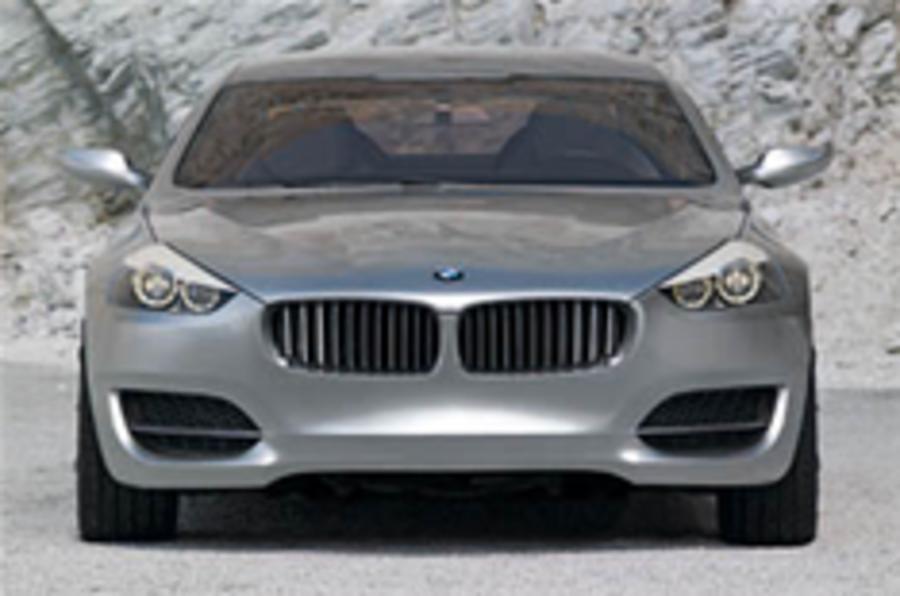We were expecting a two-seat sports car, but BMW has pulled off a carefully orchestrated surprise with its new design concept; it's a flagship saloon that's about to wow visitors at the Shanghai motor show, and we've posted every picture of it that we can find in our gallery. Here's everything you need to know about it.
The proposition
The Concept CS is a large four-door, four-seat sports saloon in the mould of the Aston Martin Rapide, but there’s more to it than that. It gives us a look at the beginning of a new design language for BMW as it starts to move away from the look pioneered by design director Chris Bangle and first featured on the current 7-series. It is not, however, a straight executive saloon. BMW puts a lot of emphasis on the car’s sporting potential, saying it “combines the qualities of a luxury saloon and a high-performance sports car.”BMW has often said it wouldn’t do a straight M-version of the 7-series because getting a large saloon to handle and perform to M-division standards wouldn’t be possible. But last year then-chairman Helmut Panke raised the possibility of an M7 model, adding that it wouldn’t just be a 7-series with a big engine. He also said that the company was looking at a new flagship model for the BMW range as a replacement for the Z8 roadster. This car would seem to fulfil both of those criteria.
The design
The Concept CS is big – at 5.1 metres long and 1.98m wide it’s larger than a 7-series and has a longer wheelbase. It’s also bigger than a Bentley Continental GT and almost as low as an Aston DB9 (1.36m), pushing it into a new market for BMW.The most significant new features are the blunt front end, dominated by an oversize version of the BMW double kidney grille, and the rear roofline, with strong echoes of the Jaguar C-XF concept. The bodysides are very deeply sculpted, but there’s no sign of BMW’s flame surfacing treatment that has divided opinion among car enthusiasts. There is also an unusual depression that divides the rear of the roof, creating a channel above the rear window. The door handles have disappeared into the chrome cappings on top of the doors. They are activated by motion sensors that detect the drivers hand as it approaches door, and then slide out of the capping. It rides on a set of impressively complex 21-inch wheels, behind which sit drilled and grooved brake discs, more often associated with cars such as Porsche 911s. Other fast-car touches include big intakes in the lower front spoiler to channel air over the brakes.
The interior
Inside, the layout and detailing of the dashboard point towards a new format for BMW cabins. The centre of the dash is angled towards the driver, reviving BMW’s trademark interior feature from the 80s, but now sweeps down into a very high centre console which wraps around the gear lever. It also creates a cockpit feel by separating the driver and passenger. That console runs the length of the interior into the rear, dividing the individual rear seats. BMW claims elbow room in the rear is as good as it is in the front. Pure concept car touches include ceramic switches for the i-Drive system and wraparound collars that slide up around the headrest. Much of the car’s interior lighting is provided by light strips in the dash and the roof, running from the windscreen to the rear glass. BMW claims this creates an ambient lighting effect, currently one of the most fashionable trends in concept car interior design.But look past the concept car touches and there are plenty of parts with production potential – the dash top mouldings and centre console are clearly more realistic than many concept car interiors.





Add your comment